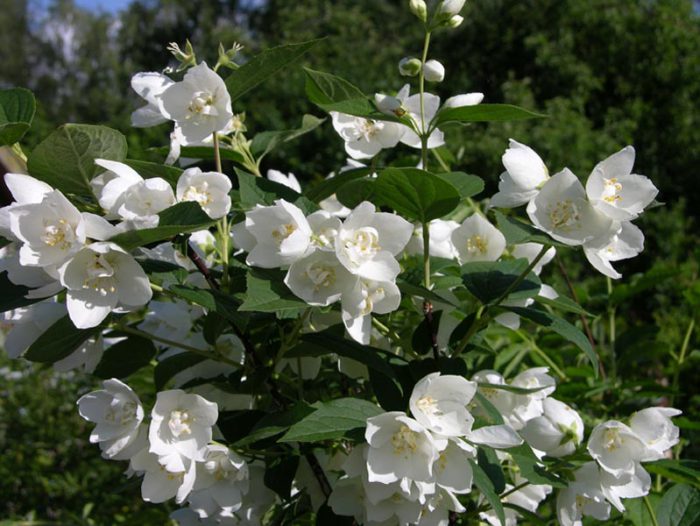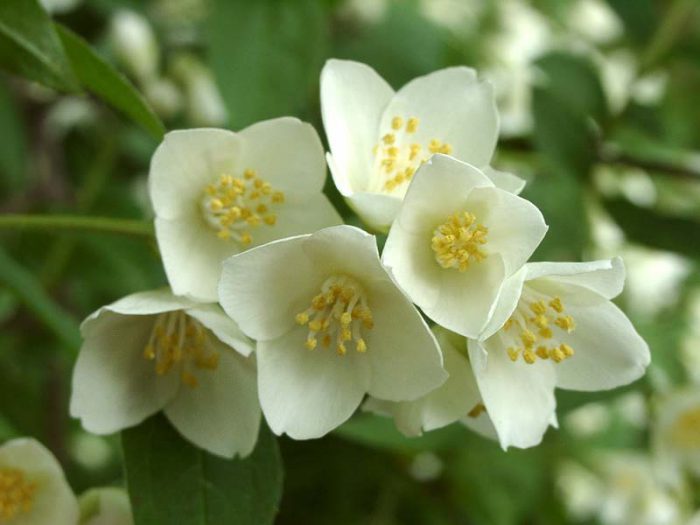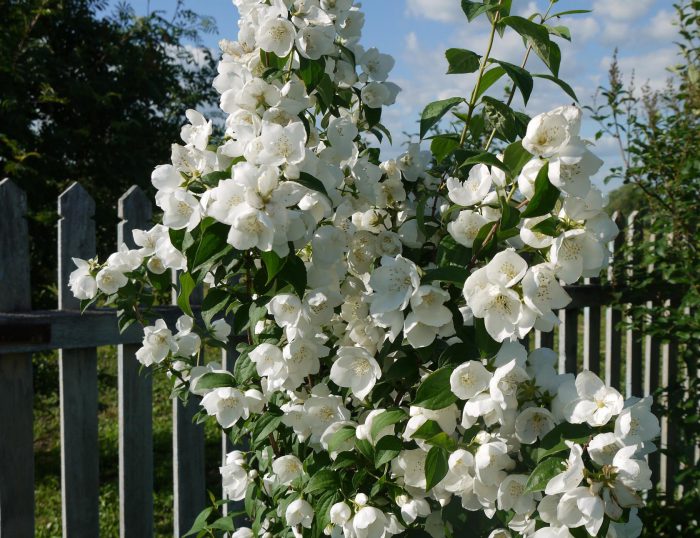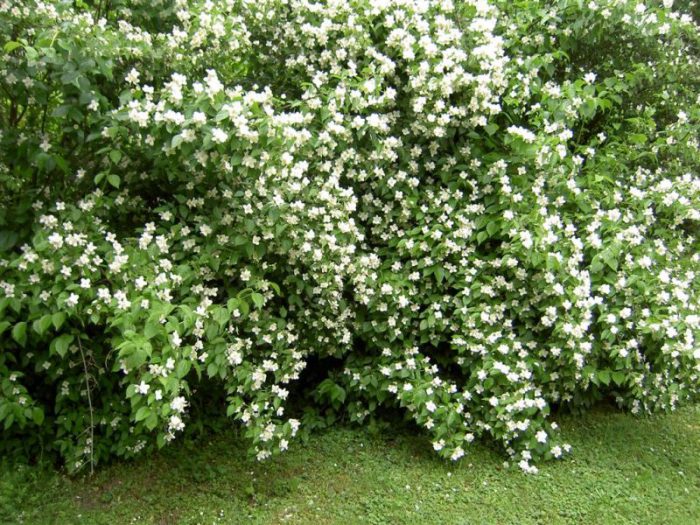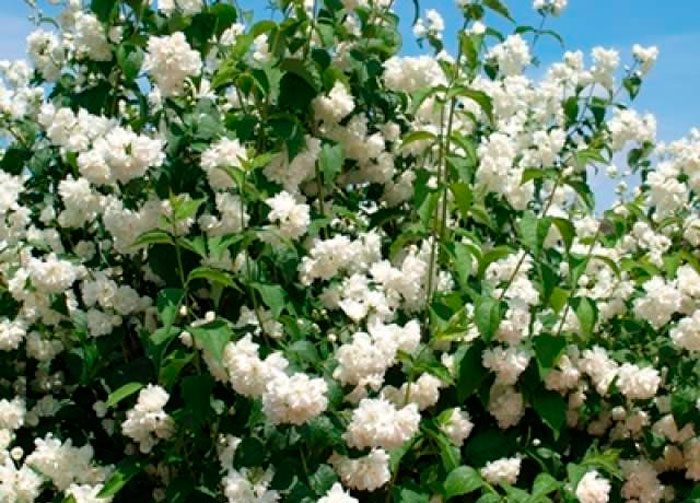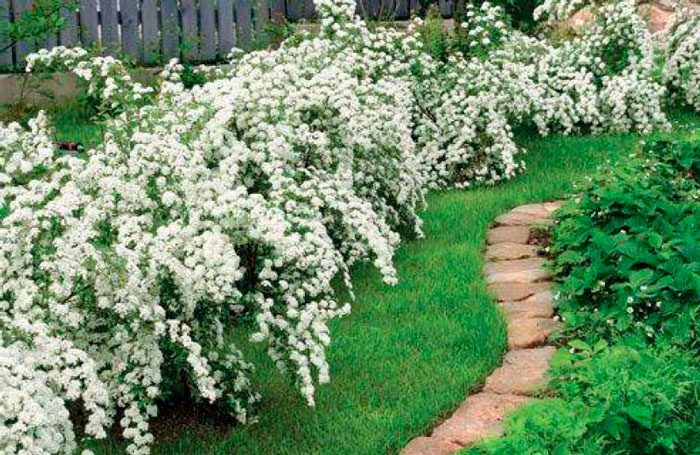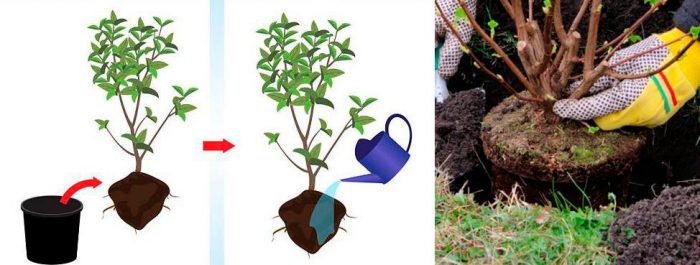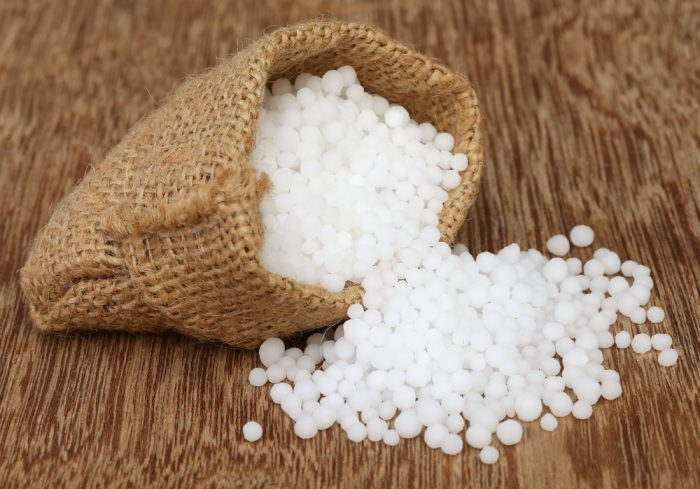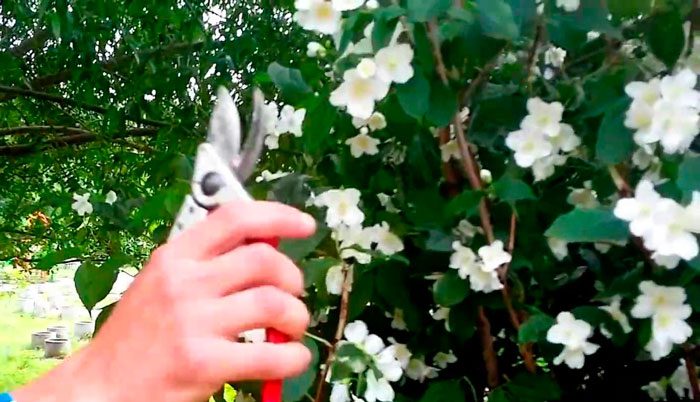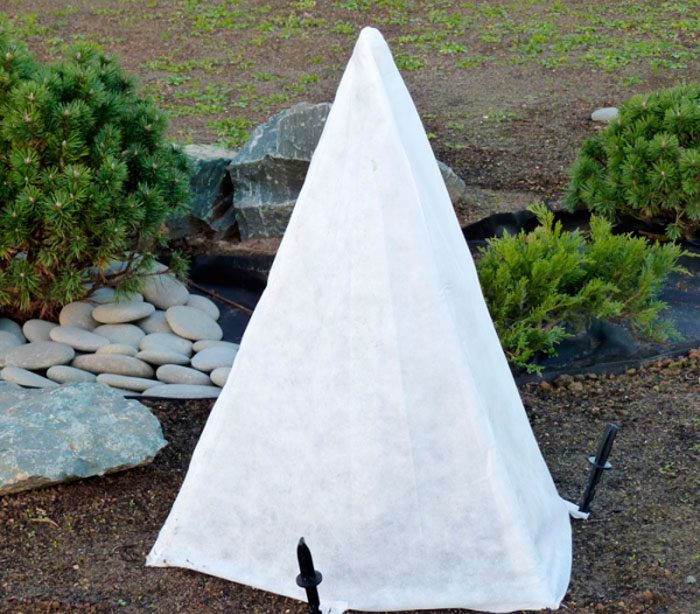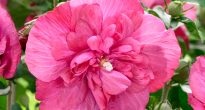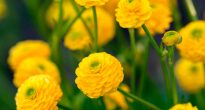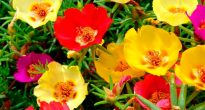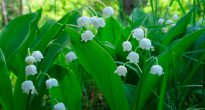Probably, almost everyone knows what garden jasmine looks like, and what it is. This plant grows a very large number of flower growers as an indoor plant. However, it is quite possible to grow it outdoors. Many gardeners are happy to grow such a spectacular flower on their site. The jasmine bush can be easily confused with the chubushnik, and although these plants need almost the same care, they differ in appearance, and also have significant differences in their origin. So, jasmine can be easily distinguished by fragrant inflorescences, which are quite large in size.
However, in order to grow a spectacular and strong plant, you need to know how to plant it correctly in spring, and you also need to know the rules for caring for garden jasmine. This kind of jasmine is a very beautiful plant, especially during flowering when fragrant flowers are in full bloom. But it needs good grooming as well as a proper fit.
Content
Features of garden jasmine
A plant such as garden jasmine is quite possible to grow in absolutely any area, but it should be remembered that it requires special care. Before you start growing a given flower, you should first find out all the details about the care it needs. However, you should first learn about this kind of jasmine better.
A native garden jasmine from the Mediterranean. This plant has medicinal properties. However, most often it is grown as decorative for decorating summer cottages and garden plots. This shrub has a very spectacular lush crown. It is most beautiful during the flowering period, when yellow or white flowers bloom on the branches, collected in inflorescences. They are incredibly scented. Garden jasmine has a large number of different subspecies, which differ from each other in the size of the flowers. These plants are distinguished by their ability to adapt to almost any weather conditions.
Garden jasmine is quite undemanding to the planting site. So, it grows and develops very well in both sunny and shady places. It can be planted both on the southern and northern sides of the site. It tolerates both drought and high humidity quite well. Various insects, including most types of bees, love to collect nectar from the jasmine bush.
The uniqueness of garden jasmine
During the flowering period, the flowers contain a large amount of essential oils, but only in those that have blossomed quite recently. They have a beneficial effect on a person's well-being. Benzyl alcohol and jasmine benzyl acetate are able to normalize a person's sexual libido. The buds of such a plant are used to make a special decoction that has the ability to normalize the functioning of the digestive system. Also, the substances contained in garden jasmine can cleanse the body of toxins, as well as strengthen the immune system. In any of the varieties of such jasmine, there are substances with medicinal properties. The jasmine bush will not only be a great decoration for your site, but can also significantly improve your health.
In order for the cultivation to be successful, you need to know at what time and how exactly to plant a given flower in open ground.
Main types with photos
Some species are most popular with gardeners and summer residents.
Small-leaved jasmine
This is a fairly compact shrub, which almost never reaches more than 100 centimeters in height. Such a plant has large and curved leaf plates. Flowers have a very pleasant smell, reminiscent of strawberries.
Jasmine coronal ordinary
The shrub is quite large. So, it can reach a height of 250 to 300 centimeters. During the flowering period, such a jasmine bush is decorated with very large and beautiful inflorescences that exude a pleasant sweetish smell. The leaf plates are painted in a deep golden color.
Jasmine fluffy
It is recommended to grow such a plant in parks or in fairly large areas. The bush can grow up to 400 centimeters in height and is the tallest of all jasmine species. However, the peculiarity of this plant is also that its lovely flowers do not have a scent. This species blooms late enough. Flowering lasts for 4 weeks.
The Gornostaeva Mantya jasmine variety is also very popular. This plant is quite compact and its height does not exceed 100 centimeters. Inflorescences are located along the entire length of the branches. Flowering lasts about 8 weeks.
Choosing a suitable landing site
These species and varieties can be found in many garden and suburban areas. As a rule, garden jasmine is planted in open ground in spring. In order for a plant to grow and develop normally, it is necessary to know several important rules for both planting and caring for it. As a rule, the planting of various types and varieties of garden jasmine is practically no different.
Key points in choosing a suitable landing site:
- When choosing a suitable place for a given plant on the site, be sure to take into account the fact that it can adapt to almost any weather conditions. However, if you want your plant to have a spectacular appearance and bloom very profusely, then it should be planted in a place that is protected from strong drafts. The fact is that they have an extremely negative effect on this shrub. Also, garden jasmine grows and develops better in a well-lit place with enough direct sunlight.
- This shrub is recommended to be planted in close proximity to flowers that have a purple or deep blue color. For example, it will look great next to a delphinium or lavender. Also, jasmine grows well next to hydrangea or spirea.
- Experts advise planting garden jasmine in the spring. However, this procedure can be carried out in the fall.
Optimal soil selection and planting
Garden jasmine, as mentioned above, is a rather unpretentious plant. But for its better growth, it should be more carefully attributed to the choice of soil, as well as to its direct planting.
- In view of its unpretentiousness, such a shrub is able to take root and grow well on almost any soil. However, if possible, preference should be given to soil saturated with nutrients. It should be remembered that jasmine roots react extremely negatively to excessive moisture, so the choice should be left on a piece of land located on a not very high elevation.
- Pour sand mixed with small stones into the hole prepared for landing. This layer will act as drainage. When planting a plant in spring, it is recommended to pour nitrophosphate in an amount of 50 grams into the hole. This will allow the plant to quickly take root in a new place.
- When the bush is planted, the soil will need to be tamped a little. Then the jasmine must be watered.
- In order for the plant to develop correctly, it is necessary to systematically apply fertilizers to the soil.
Feeding rules
In order for your site to be decorated with a lush jasmine bush, you not only need to take care of it regularly, but also systematically apply fertilizer to the soil. It should be remembered that the very first feeding should be carried out only 12 months after planting the plant in open ground.
Garden jasmine needs minerals. To feed the plant, it is recommended to use a nutrient solution consisting of 1 liter of water and 5 grams of superphosphate. Add another 2.5 grams of urea and potassium sulphide to the resulting solution. After that, the solution is thoroughly mixed. It is used to fertilize this shrub.
Garden jasmine also needs organic fertilizers. So, it is recommended to use manure for feeding, as well as humus. But at the same time, it should be remembered that manure for feeding should be used only in a diluted form, otherwise the plant's root system may burn out. It is recommended to dissolve manure in water in a ratio of 1:15.
Pruning features
In order for the jasmine bush to be lush and fragrant, dressing alone is not enough, it still needs to be properly looked after.
In order for the crown to always look well-groomed and spectacular, regular shaping pruning should be carried out. Both summer residents and gardeners have several secrets and rules regarding this procedure:
- formative pruning must be carried out in spring, when the shrub is in a vegetative state;
- the longest branches must be cut off completely, and the short ones must be shortened by ½ part;
- for more abundant flowering, rejuvenating pruning is carried out, or rather, all empty branches are removed;
- in an adult bush, the central trunk must be cut to 45-50 centimeters, while the rest are removed entirely.
Every year it is imperative to inspect the shrub and remove damaged as well as diseased branches.
Preparation for wintering
In order for the plant not to die in the winter, it must be properly prepared for this difficult period. To do this, you should perform several very simple manipulations:
- It should be remembered that adult specimens are more hardy than young ones. Therefore, adult plants may well not be prepared for the winter period. However, this procedure is needed by those jasmines that are still quite young.
- When the shrub has faded, it should be wrapped in a material specially designed for this. You can also use regular straw for this purpose.
- So that during the winter cold the roots of jasmine do not suffer, in the autumn time you need to dig up the soil around the trunk and do not forget to add compost to it.
- If desired, in the spring, this shrub can be transplanted to a new place.
Transplant features
Garden jasmine is transplanted in the spring. To do this, you need to prepare the soil by digging a hole in it, which in size should correspond to the volume of the root system of the bush.The plant is transplanted into this hole, while the rules are similar to those that apply to planting such a shrub in the spring.
Reproduction methods
It is very easy to propagate garden jasmine. So, there are several ways:
- Seeds. Seeds are sown both in open ground and in a box at home (growing through seedlings).
- Cuttings. It is recommended to cut cuttings in the first days of June. Then they are planted either in open soil or in a greenhouse.
- Shoots. In springtime, the shoots should be prepared by separating them from the mother plant. The choice should be stopped on the strongest shoots. After they overwinter, with the onset of the spring period, they are transplanted to a permanent place.
- Division of the root system. This is not the most popular breeding method. The division is recommended in the autumn.
Also, be sure to remember that indoor and garden jasmine are different crops, and each of them requires special care.

